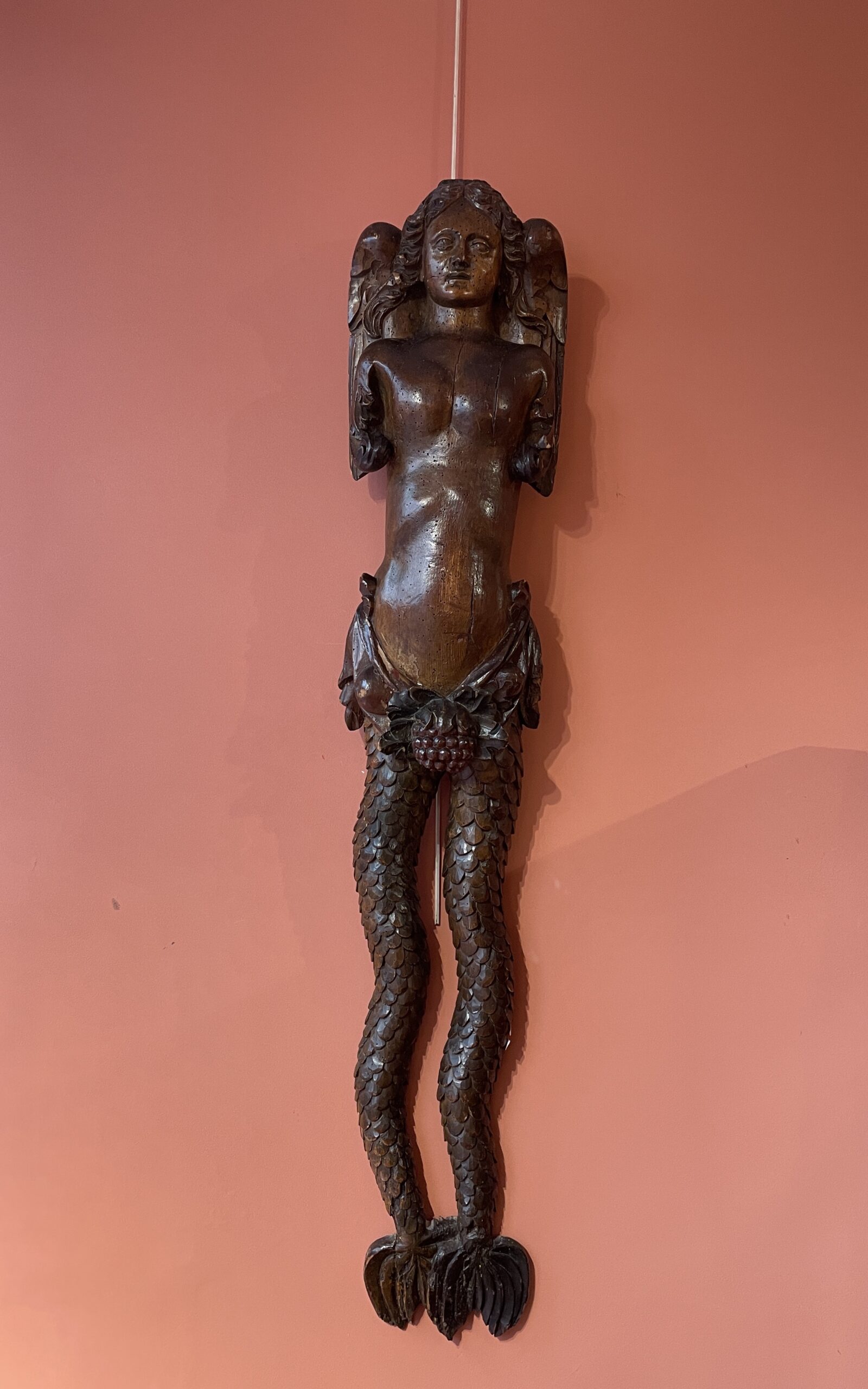Description
In Medieval Europe and even more during the early 16th century fantastic beasts could be found in Bestiaries, a literary genre close to poetry. A bestiary used the characteristics of living animals and imaginary creatures to be intepreted symbolically through moral and religious teachings.
During the following centuries – and despite the progress of science leading to a better knowledge of an extremely complex zoological world – fantastic creatures kept inhabiting the Western culture, maybe as a reaction to a society more and more logical and Cartesian.
Winged creatures are often hybrids, that is an association of different species’ body parts as it is the case with mermaids.
The mythological tradition does not depict mermaids as we know them today with the bust of a woman and the bottom ending in a fish tail. Originally mermaids were represented as bird-women or a bird with the face of a woman and were called harpies. The iconography of the creature half-woman half-fish comes from Christian authors talking about « girls from the sea, misleading sailors with their great beauty and the softness of their voices. From head to navel their bodies look like the body of young virgins but they also present a fish tail » (Liber Monstronum).
The mermaid we present follows the half-woman half-fish type with the exception of the arms shaped as acanthus leaves and two wings stemming from her shoulders and framing her round face and curly hair. The bust is soberly treated and ends by a drape on the hips, a foliated bunch of grapes in its centre.
The particularity of this mermaid resides in the way her legs are depicted by the artist ; two fish tails with finely carved scales. Each tail is achieved by beautiful caudal fins.
The harmony and beauty of this sculpture comes from the balance between the sobre treatment of the bust, highlighting the depth of the limewood and the subtlety of the carving for the fish tails. This wood carved bracket is a perfect example of Southern German sculptors’ artistry in the early 16th century.

































